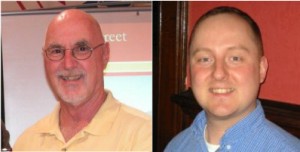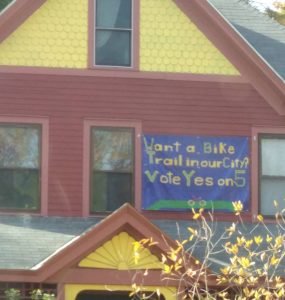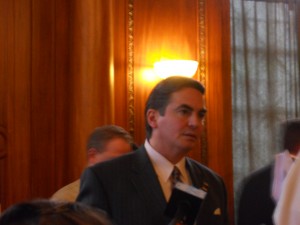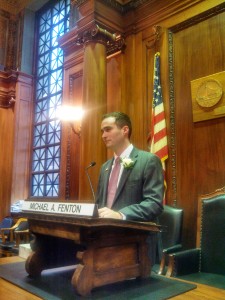A Local Question Ponders Power to the People (and the Community)…
SPRINGFIELD—It is not exactly an open secret that Massachusetts’s third largest city has a number of unmet needs both small and large. Because of any number of disparities, there are few tools Springfield can apply that its neighbors can: except one.
Virtually all of Springfield suburbs and 161 communities statewide have adopted the Community Preservation Act, a program funded by property tax surcharges and state matching grants. Activists in the city, as are those in cities ranging from Boston to Holyoke, are hoping to pass what is listed as “Question 5,” and activate the community-driven program.
The question will appear on Springfield ballots following the four state ballot questions.
The Springfield proposal would add a 1.5% surcharge on property taxes assessed after the first $100,000 of property value. For a home valued at $150,000, only the tax on the last $50,000—$983 under current rates—would be subject to the surcharge equaling about $15 annually. According to Zillow, the median home price in Springfield is $135,600, yielding a surcharge of $10.
CPA funds can only go toward historic preservation, open space/recreation and housing projects.
But as in other communities like Holyoke, some are arguing either that it is a burden on tax payers or will just be more government waste.

Bob McCarroll, left & Ralph Slate, Springfield CPAdvocacy’s Treasurer. (images via Facebook & LinkedIn)
“Our slogan is ‘give a little get a lot’ and I think that sums it up,” said Robert McCarroll, a former Historical Commissioner and president of Springfield CPAdvocacy, the committee behind the measure.
If adopted, the Council must establish a Community Preservation Committee.
City Council President Michael Fenton promises swift action if voters approve Question 5, “We will immediately begin drafting an ordinance.”
The CPA committee must include one representative each from the Historical Commission, the Housing Authority, the Conservation Commission, the Parks Commission and the Planning Board. Councilors may opt to add additional at-large members.
Once formed, the committee will survey community needs and call for proposals from city departments, nonprofits or individuals. Any project it recommends must then be approved by the Council. In addition to the surcharge, the state kicks in funds from an assessment on recordings with registers of deeds. While this charge is assessed on recordings in Springfield, the city receives none of it.

Neighborhoods with historic properties, some of which are in disrepair, like McKnight, could benefit under CPA. (via mcknightcouncil.org)
In an interview, McCarroll said the advantage of CPA is it allows the city preserve and develop the assets, such as its parks and historic assets, that encourage people to move here.
CPA got more of his attention following the end of his tenure on the Historical Commission. After a series of meetings, Fenton established a committee, headed by Councilor Ken Shea, to study the city’s options and drafted a question for voters. The Council later approved its recommendations in July 11-1.
Other communities have been using the act for some time. The Community Preservation Coalition, a statewide organization for local CPA committees, maintains a database of CPA-funded projects.
The database shows hundreds of projects funded through local CPA committees. Agawam built a handicap accessible playground at the Phelps School and restored a historic barn. West Springfield restored a historic house on the town green. More urban communities like Cambridge and New Bedford prepped dilapidated buildings for reuse, built bike trails and invested in their affordable housing trusts.
Proposals can come from the public and are approved by the CPA committee. “Unlike the normal municipal budgetary process which is top down, this is bottom up,” McCarroll said.
That may explain some opposition that has formed.
Mayor Domenic Sarno has claimed CPA creates a burden on taxpayers, echoing the position of anti-tax activists like Peter Paul Nicholai. “I stand firmly against this City Council tax initiative,” Sarno said in a letter to the editor, charactering the issue as another mayor-council battle and not something for voters to decide.
However, CPA’s spending would be decentralized and away from the mayor’s office. Proposals would come from the community. The text of the law ostensibly envisions no direct role for the mayor.
Sarno’s position is odder still as he has noted—correctly—that the city has a “revenue problem” not a “spending problem” in each annual budget presentation.
Other mayors have embraced CPA. In Holyoke, Mayor Alex Morse has backed CPA as has Boston Mayor Martin Walsh. In the Hub, CPA could raise $16 million between the surcharge and state funds.

“Mahty” approves of CPA. (via Twitter/@marty_walsh)
“Our city is growing and thriving, but success has brought challenges-housing costs being one of the greatest,” Walsh said in an April release. “I believe the Community Preservation Act offers a balanced and timely strategy for helping Boston build affordable housing, invest in our parks, and preserve Boston’s historic and inclusive character.”
Boston’s CPA proposal largely mirror’s Springfield. Because property values are much higher, the average Beantown surcharge would amount to $24 annually.
Another challenge is suspicions about the government’s ability to spent money wisely.
“I don’t know how you overcome that when you think government should be as minimal as possible,” McCarroll conceded.
Advocates scaled back earlier ambitions to leverage CPA to finance the multimillion dollar repairs to the Campanile in attempt to broaden CPA’s appeal.

CPAdvocacy has highlighted a range of potential projects, such as a dog park like this one in Agawam. (via Facebook/Springfield CPAdvocacy)
Consequently, they focused on smaller-scale projects like rehabbing the city’s stock of historic, but dilapidated homes. Such projects could also become affordable owner-occupied housing.
“The city has a variety of vacant historical deteriorating buildings,” McCarroll noted, referring to one of his personal causes.
He acknowledged that competition over the money Springfield could glean, about $1 million from the surcharged matched by about $250,000 from the state, may be fierce. However, the mandate to spend at least 10% of the funds on each of the CPA’s areas ensures funds are spread around.
It is difficult to measure the question’s fate. The city usually sees around 55,000 voters in presidential elections, about twice the average turnout in municipal elections over the last 30 years.
Unlike CPA supporters in Holyoke, Springfield CPAdvocacy faces no organized opposition and the sheer size of the electorate could swamp attempts by the city’s waning machine to move the result.
The biggest challenge may be complexity. A tome explaining CPA will accompany Question 5 and such items tend to experience higher incidents of under votes or blanks.
Supporters believe education could solve that.
“The more people who hear the message and understand the legislation, the better our chances,” Fenton said, who is supporting Question 5 but has not actively campaigned for it.
McCarroll and others have been making presentations across the city and some neighborhood associations and community groups* have endorsed the measure. Reps Carlos Gonzalez Jose Tosado and Senator Eric Lesser have lent their support as well.
Potential opposition, like from the Outer Belt Civic Association in the city’s southeast corner, never materialized. McCarroll said after he presented CPA to Outer Belt he found “a range of support versus non-support.” No vote on Question 5 was ever called, McCarroll said.
*Disclosure: An organization that endorsed Question 5 is chaired by editor Matt Szafranski, however, the endorsement was added at the request of another member and, as chair, Szafranski did not vote.



